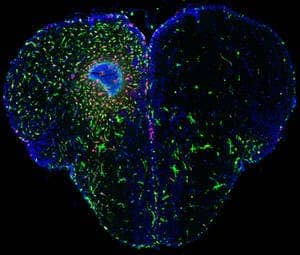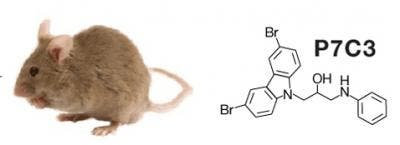Any mammal, including humans, suffering from an injury to the central nervous system will lead to a life-long loss of the particular affected brain function. Some invertebrates, like the zebrafish, in contrast can regenerate parts of their organs, even the central nervous system. The zebrafish’s remarkable ability to regrew parts of its damaged brain has fascinated neuroscientists for decades, but until now the mechanisms that signal this formidable regeneration have been unknown.

A group of scientists at the Center for Regenerative Therapies Dresden (CRTD), Germany decided to investigate and found that in zebrafish — in contrast to mammals — inflammation is a positive regulator of neuronal regeneration in the central nervous system, and in fact, is required.
“Our results suggest that acute inflammation can promote central nervous system regeneration, because it provides cues necessary for the initiation of the reactive proliferation and regenerative neurogenesis in adult zebrafish brain,” the researchers say in a Science paper. “Our findings reveal a signaling pathway in zebrafish that couples the inflammatory response to efficient enhancement of stem cell activity and initiation of neural regeneration.”
Brain inflammation is very, very bad news for humans, as swollen brain tissue can lead to anything from concussions to meningitis. In zebrafish, though, inflammation seems to be just the first step towards recovery, kickstarting the process by which neural stem cells transform into functioning brain cells.
“Using Cre-loxP-based genetic lineage-tracing, we demonstrate that her4.1-positive ventricular radial glia progenitor cells react to injury, proliferate and generate neuroblasts that migrate to the lesion site. The newly generated neurons survive for more than 3 months, are decorated with synaptic contacts and express mature neuronal markers. Thus, regeneration after traumatic lesion of the adult zebrafish brain occurs efficiently from radial glia-type stem/progenitor cells.”
This molecule called leukotriene C4 (LTC4) causes immune cells build up at the site of the injured tissue. While these cells are associated with the detrimental scarring in humans, they did not appear to hamper new-neuron growth following acute inflammation in zebrafish – but in fact initiated regeneration.
The next step for the researchers involved in the study is to see how LTC4 behaves in mice, and then in human brain tissue from brain banks, to see if a similar response is observed.
“The pro-regenerative mechanisms identified in zebrafish could in the future be used to restrict damage after traumatic injury and to slow down neurodegenerative disorders,” said Jan Kaslin co-author of the paper. Such disorders include Alzheimer’s and Parkinson’s.






